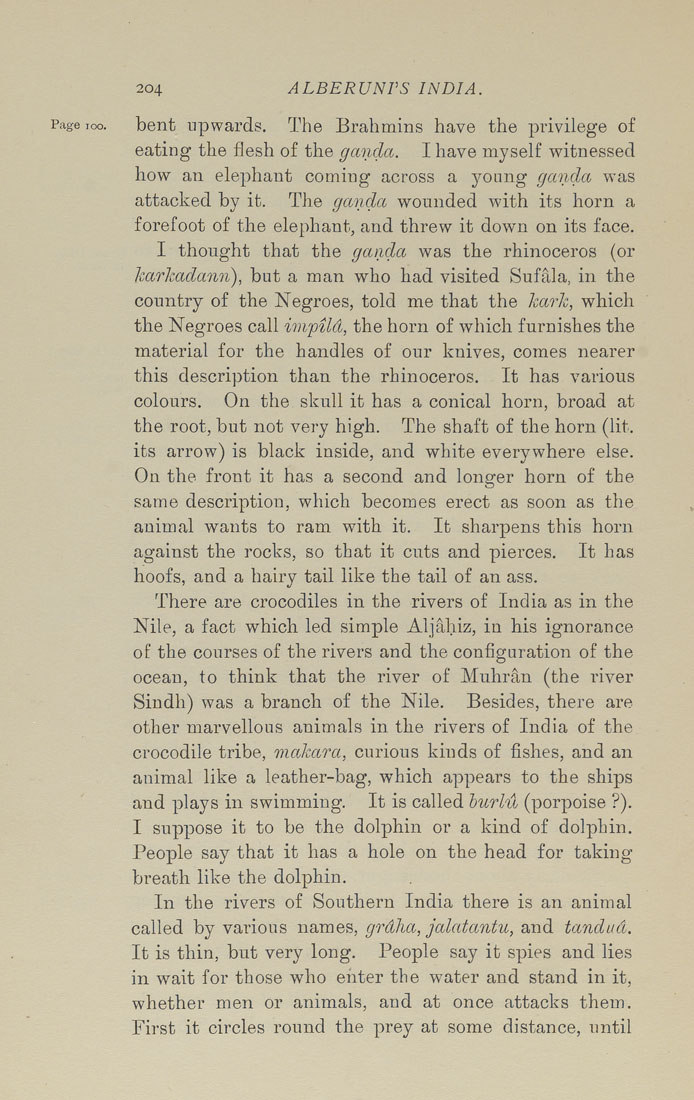Bīrūnī, Muḥammad ibn Aḥmad, Alberuni's India (v. 1)
(London : Kegan Paul, Trench, Trübner & Co., 1910.)
|
||
|
|
|
|
| Page 204 |

204 ALBERUNPS INDIA. Page ICO. bent upwards. The Brahmins have the privilege of eating the flesh of the ganda. I have myself witnessed how an elephant coming across a young ganda was attacked by it. The ganda wounded with its horn a forefoot of t\ie elephant, and threw it down on its face. I thought that the gamla was the rhinoceros (or karkadann), but a man who had visited Sufala, in the country of the Negroes, told me that the kark, which the Negroes call impild, the horn of which furnishes the material for the handles of our knives, comes nearer this description than the rhinoceros. It has various colours. On the skull it has a conical horn, broad at the root, but not very high. The shaft of the horn (lit. its arrow) is black inside, and white everywhere else. On the front it has a second and longer horn of the same description, which becomes erect as soon as the animal wants to ram with it. It sharpens this horn against the rocks, so that it cuts and pierces. It has hoofs, and a hairy tail like the tail of an ass. There are crocodiles in the rivers of India as in the Nile, a fact which led simple Aljahiz, in his ignorance of the courses of the rivers and the configuration of the ocean, to think that the river of Muhran (the river Sindh) was a branch of the Nile. Besides, there are other marvellous animals in the rivers of India of the crocodile tribe, makara, curious kinds of fishes, and an animal like a leather-bag, which appears to the ships and plays in swimming. It is called burlu (porpoise ?). I suppose it to be the dolphin or a kind of dolphin. People say that it has a hole on the head for taking breath like the dolphin. In the rivers of Southern India there is an animal called by various names, grdha, jalatantu, and tandud. It is thin, but very long. People say it spies and lies in wait for those who enter the water and stand in it, whether men or animals, and at once attacks them. First it circles round the prey at some distance, until |
| Page 204 |







